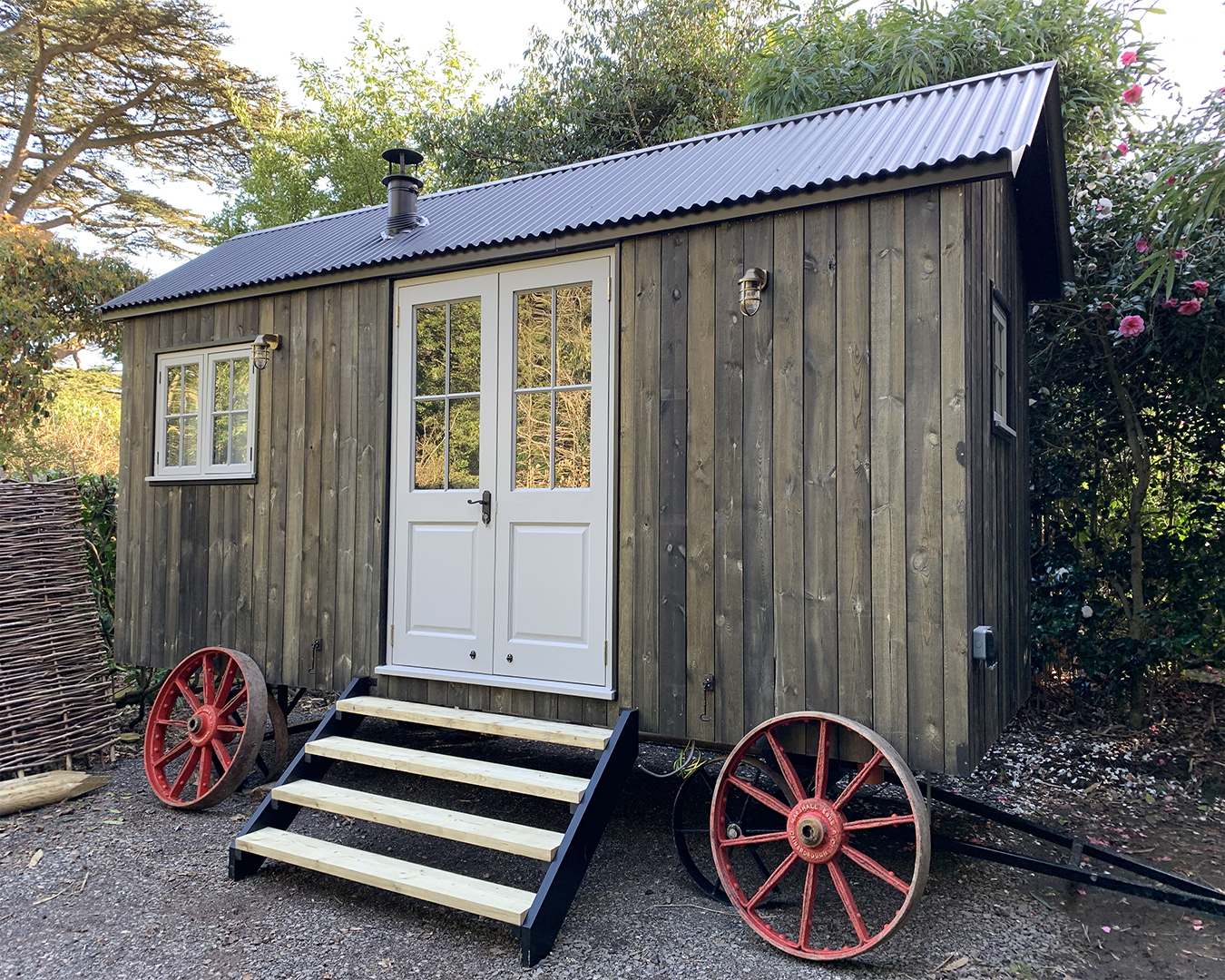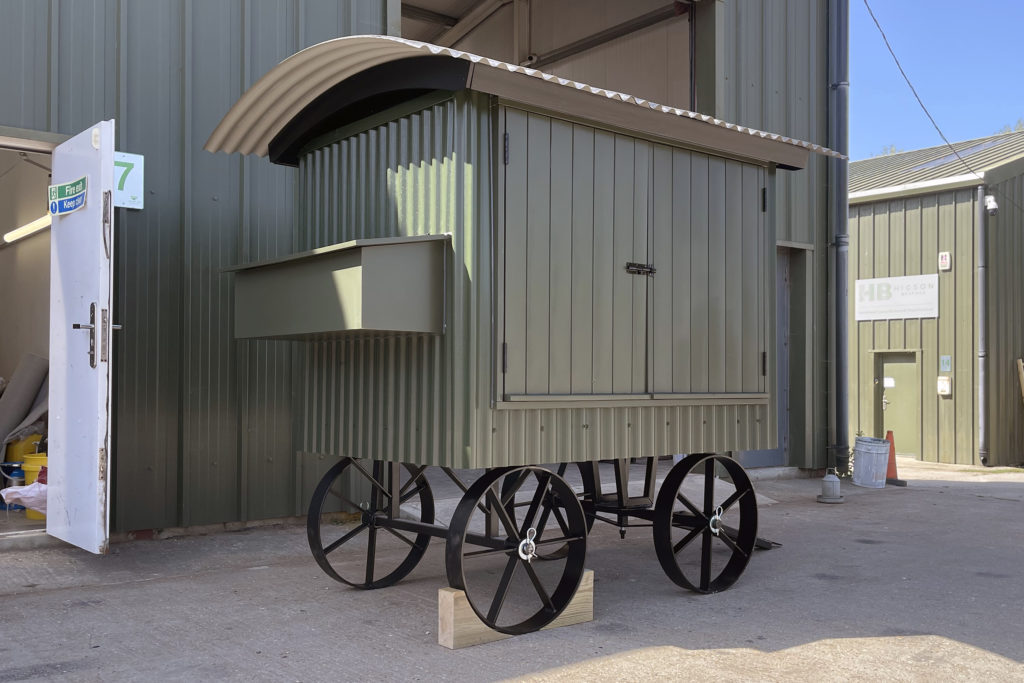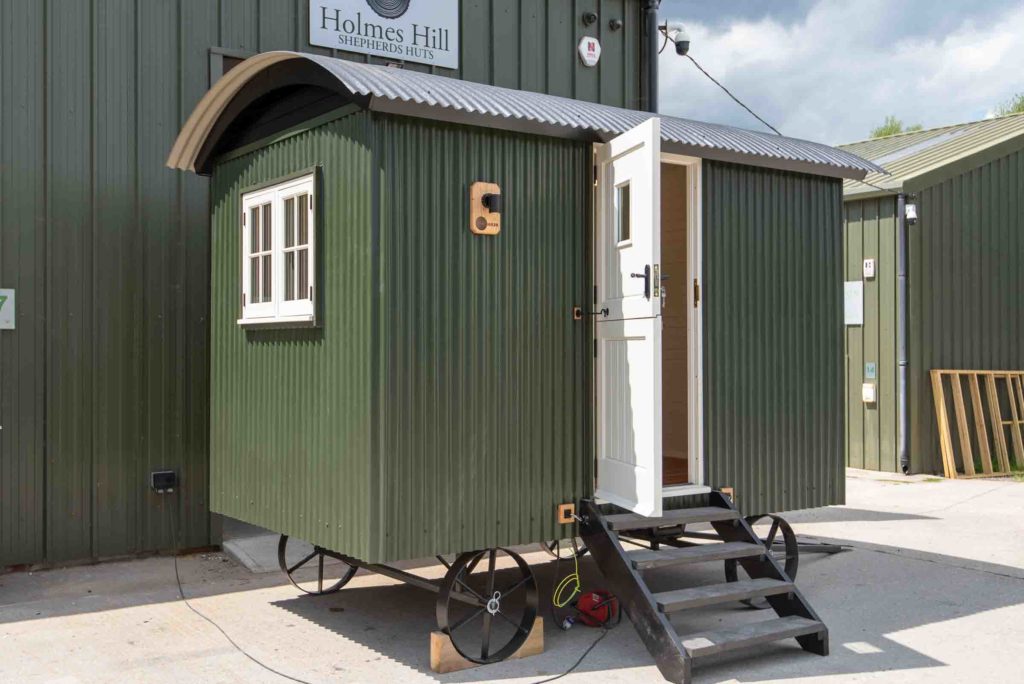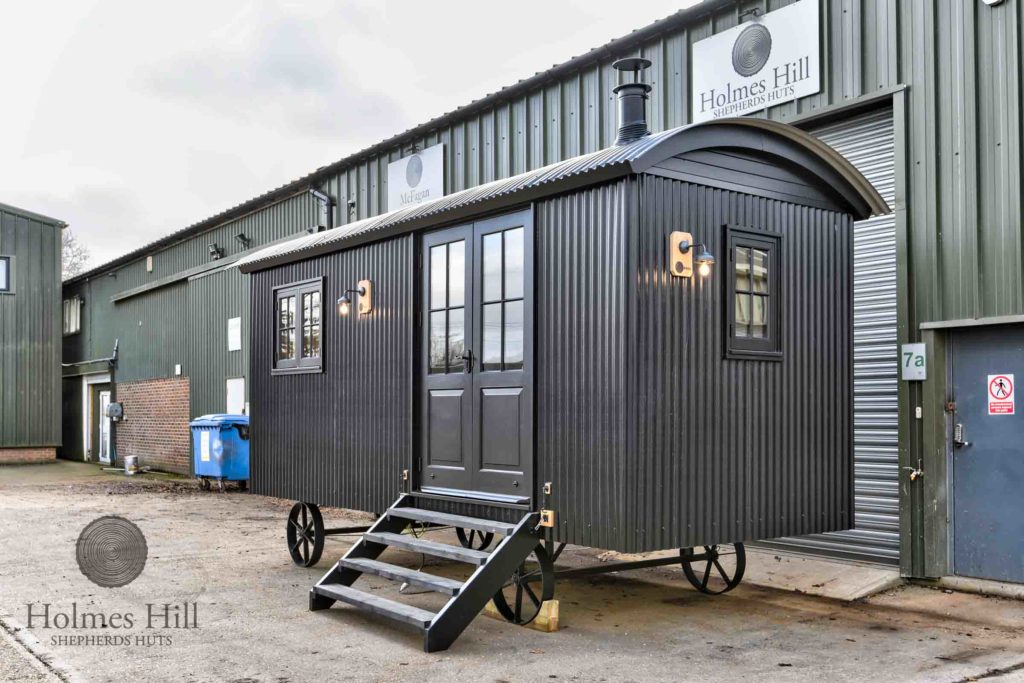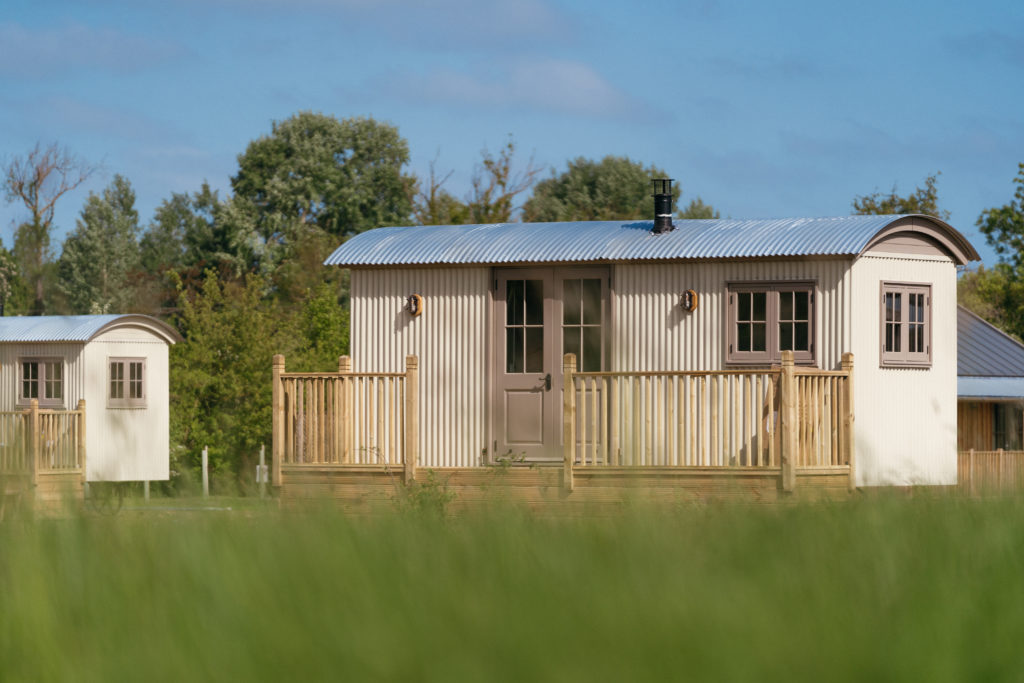The shepherd hut were first manufactured and developed in the early 1800s and used by shepherds watching there sheep and livestock. They were typically made from wood, with a thatched or tin roof, and were more often than not equipped with a stove and a bed as well as sometimes a few other basic amenities.
Before the 19th century sheep were valuable assets in lowland England, which meant that a shepherd had to be close at hand. Shepherd huts were portable because once a field had been grazed (this could take a few weeks) the shepherd and his flock had to move onto the next field (lowland sheep weren’t allowed to wander freely). In the late 1800s, shepherd huts also began to be used as temporary housing for agricultural workers. They were often used by farmhands, labourers, and other itinerant workers who needed a place to stay while they were working in the nearby area. The huts provided basic shelter and protection from the elements, and they could be easily moved when the worker needed to move on.
When first produced shepherd huts were made by local blacksmiths, until larger companies such as Reeves, based in Wiltshire, started specialising and producing them in mass volumes.
But by the 20th century shepherd huts were starting to fall out of fashion – changes in agricultural practices meant lowland sheep farming was less economic, so there were fewer shepherds around. However, many old shepherd huts found new uses in World War II as shelters for Home Guards and as accommodation for prisoners of war who worked as labourers on British farms.
In the last 20 years, however, shepherd huts have come back into fashion, becoming increasingly popular as garden offices and studios, as well as for use in glamping sites. There are a number of reasons for this such as, Shepherd huts are a practical, functional and comfortable living space and the traditional design works well in a range of settings. The mobility of a shepherds hut mean they’re adaptable, and can be moved if needed and Shepherd huts are typically made from durable and sustainable materials, making them a long-lasting and eco-friendly option. The compact size and simple design of a shepherd hut can make it relatively inexpensive compared to other types of housing.
The history of shepherd huts is a long and varied one, and despite falling out of fashion for a while, it’s brilliant that they’re once again a huge feature of British countryside where they would have once been a common sight. We hope that they will be around for a long time to come.

